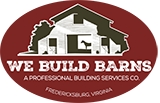How to Make Sure Your Horse is Drinking Enough in Cold Weather
Submitted by: Tania Woerner
Phone: 540 270 9250
Email Address: drtaniawoerner(at)tallyoaksvet.com
Date Added: 1/17/2010
RAWHY IS WATER CONSUMPTION A CONCERN IN THE WINTER?
When the temperature drops drastically and water, that has previously been unchilled, is now very cold or even frozen many horses will reduce their intake of water. This initial lack of water consumption presents little problem but, if prolonged will result in dehydration and ultimately impaction colic.
Water sources should be checked at least once daily, if not more, to ensure that horses will have unfrozen water available to drink. For man-made water sources such as buckets, troughs or automatic waterers, use electric water heaters to keep water from freezing. One note of caution, with some of the less-expensive heaters or with improper barn wiring, stray electricity can be a problem. Always use a GFI outlet and watch your horses approach the water trough and drink. It will be obvious if they are afraid to drink.
Remember that snow is NOT an alternative to fresh, unfrozen water. Snow is very low in actual moisture content, and the horse would have to eat many pounds of it each day to meet its minimum daily water intake requirements.
HOW MUCH WATER?
The actual daily amount of water that most horses need to consume (at a minimum) to maintain body functions and remain properly hydrated is from a half gallon to a gallon per 100 pounds of body weight. This works out to be a minimum of five to 10 gallons for a 1,000-pound horse that is not presently doing any work and is living in a temperate climate.
HOW DO I MAKE MY HORSE DRINK MORE?
Keep it clean! Thoroughly scrub out water troughs weekly, yes even in winter! Algae still grows in cold water. Also, hay and other debris will accumulate in the bottom of the trough and make the water less palatable.
Keep it unfrozen. Knocking a small hole in the trough does not suffice. If you can’t do the electric heater, then break the ice and take a pitchfork and remove all the pieces to prevent it from refreezing immediately.
Provide water where the horse eats. Often times keeping a filled water bucket in the stall will encourage the horse to drink after eating his grain/hay. Heated water buckets are a great idea provided they are installed safely.
OTHER WAYS OF ADDING WATER TO THE DIET: USE OF BEET PULP, BRAN MASH, ALFALFA CUBES
First a word of caution, these forms of nutrition are not balanced with respect to minerals, therefore daily or frequent use of these forms of nutrition are not recommended unless you consult with your veterinarian. DO NOT USE THESE AS A SUBSTITUTE FOR THE NORMAL GRAIN and HAY ration. The discussion that follows is for the occasional use in a healthy horse, of optimum weight, primarily to increase the amount of water consumption in very cold weather.
ALFALFA CUBES: Horses love alfalfa and soaked alfalfa cubes can be an effective way to add water to the diet. Most of our horses don’t need alfalfa, so don’t overdo it. Alfalfa is high in calcium and protein and if you have a horse that tends to get a little too frisky to ride, avoid alfalfa and use beet pulp or bran instead. Normally I supplement the normal grain ration or slightly decrease the grain when I use alfalfa cubes. No exact science to feeding the cubes but start by soaking three or four handfuls (about 1 lb) of cubes in hot water. Add enough water to cover the cubes. Allow them to soak for about 20-30 minutes or until they are swollen and falling apart. Don’t let them sit in warm water in a heated room overnight as they will ferment. The goal is to increase water intake, so gradually try to add more and more water. Some horses won’t eat sloppy food so you have to experiment with each horse. Mine love it and have never complained about too much water! I feed this based on the weather, the colder the weather the more often I use this. For the purpose of increasing water intake, feed this more frequently when the weather gets colder. Normally once a day, several times a week is safe but if your horse is overweight or has existing medical problems it is best to avoid alfalfa. Safest advice is to call your veterinarian if you have any questions.
Cold Winter Soaked Alfalfa Cubes for Horses
Normal or half of grain ration
1-2 lbs of dehydrated alfalfa cubes
1 tsp Lite salt (KCl)
1 tsp regular table salt (NaCl)
Add hot water to alfalfa cubes, add enough water to cover cubes. Let soak for 20-30 minutes or until cubes fall apart.
BEET PULP
Beet pulp is a byproduct of sugar beets after the sugar has been extracted. It offers some advantages such as being low in soluble carbohydrates, easy to chew, high in fiber and relatively cheap. Personally, I like the shredded beet pulp with molasses the best. If you get this you don’t have to add more molasses or sugar. Beet pulp ferments quickly so don’t soak it overnight. Soak it with hot water, add twice as much water as beet pulp. Cover it with a towel, and then feed it after it has absorbed all the water, usually 30 minutes later. Once again, it is best to begin feeding beet pulp in small amounts and gradually increase the amount until you reach the desired amount.
As a general rule of thumb, daily portion size of beet pulp for a pony should not exceed two pounds. Horses under the age of three should not be fed more than four pounds of the dried pulp, while six pounds of this substance is the limit for a fully grown horse.
The main reason for feeding beet pulp to a healthy horse is to increase water intake, not to increase calories; however, in the winter caloric requirements do increase slightly so a few extra calories won’t hurt the average healthy horse. Gradually introduce this and mix it with the grain. Like alfalfa, beet pulp is an excellent source of calcium. Beet pulp can be fed everyday, especially during extremely cold weather. It is safer to feed on a daily basis than alfalfa or bran.
Cold Winter Soaked Beet Pulp for Horses
Normal or half of grain ration
4-6 lbs of dried shredded beet pulp
1 cup molasses or brown sugar
Hot water to effect
1 tsp Lite salt (KCl)
1 tsp regular table salt (NaCl)
Add enough hot water to cover beet pulp (usually twice as much water as beet pulp). Add molasses or sugar and salt. Cover and let soak for at least 30 minutes.
BRAN MASHES:
There is a lot of controversy over feeding bran; however, for the purposes of increasing water intake on an occasional basis, rest assured that the old timers (apparently I’m one of them!) still occasionally use it.
A bran mash is made basically by adding a source of bran, usually wheat bran, with hot water and other ingredients. Many people believe that this warms the horse up on a cold day. This is not true; in fact, feeding more hay actually generates more heat through the digestive process.
Studies have indicated that wheat bran is not a laxative in horses. The only benefit a bran mash might have is to increase water consumption. However, a significant increase in water consumption would require at least 2 to 3 gallons of water.
The danger of feeding bran is when it is fed on a daily basis. It is high in phosphorus and can cause calcium deficiency and bone problems.
In summary, feeding a bran mash may make both you and your horse happier (they really do enjoy it!) and as long as you don’t feed it daily it can’t hurt anything. A bran mash once a week is fine. Use the following recipe or customize it. I add carrots and apples.
Cold Winter Bran Mash for Horses
Normal or half of grain ration
1 lb dry bran
1 cup molasses or brown sugar
Hot water to effect
1 tsp Lite salt (KCl)
1 tsp regular table salt (NaCl)
Add hot water to bran until it is the consistency of hamburger. Add molasses or sugar and salt. Let soak for 5 to 10 minutes.
HOW TO RECOGNIZE SIGNS OF DEHYDRATION:
The most reliable and easiest test to check for dehydration, if you’re not a veterinarian, is to stick your finger inside the lower lip. It should be moist and slimy, if it is dry, your horse is dehydrated. While you are at the mouth, lift the upper lip and note the color of the gums (normal is light pink), press on the gums with your thumb and release. Color should return to the area within 2 seconds. Any longer then 2 seconds could be another indicator of dehydration. Other signs are an elevated heart rate. A normal heart rate or pulse is 28-40 beats per minute for an adult horse. Skin elasticity is tricky but can be helpful if you practice and know what normal looks like. Pinch the skin along the neck in front of the shoulder and observe how fast it retracts back to normal. Less than two seconds is normal.
Luckily, dehydration in the early stages can usually be corrected. If you think your horse is dehydrated, call your veterinarian immediately. It may prevent costly veterinary treatment for impaction colic and more importantly save your horse’s life.
Remember that water is the most important nutrient that horses need to consume daily. It is our responsibility as horse care providers to ensure that horses receive the proper amount of fresh, clean, and palatable water, especially during cold weather.
Tania D. Woerner, VMD
Tally Oaks Veterinary Service, PLC
19302 Silcott Springs Road
Purcellville, VA 20132
www.tallyoaksvet.com
drtaniawoerner@tallyoaksvet.com
540 338 7081 clinic no.
|
Click Image to View Larger

|



